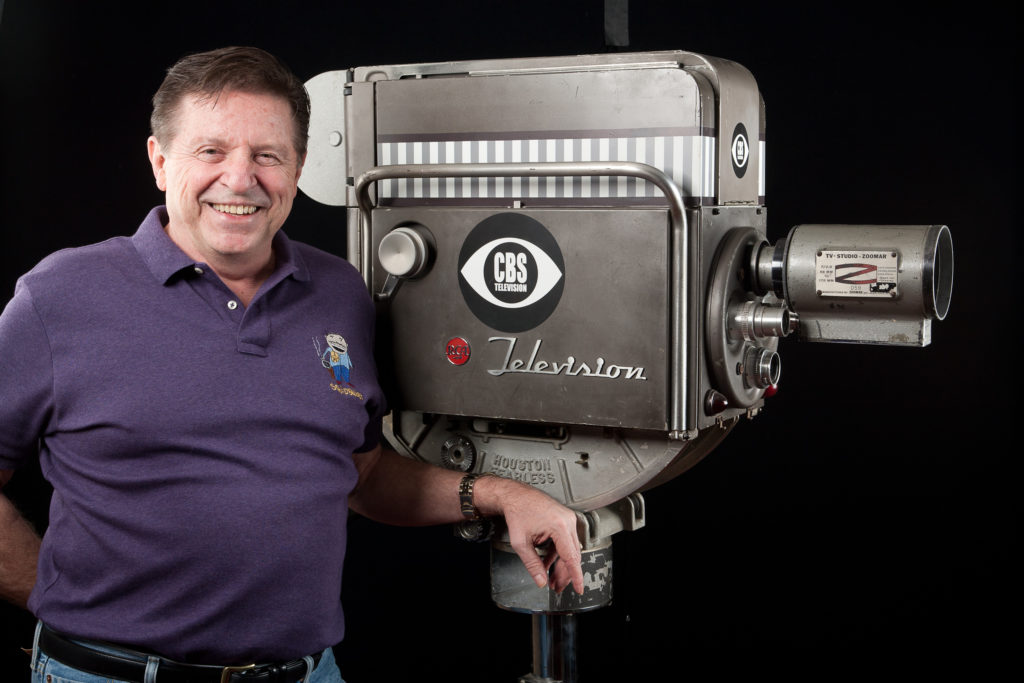
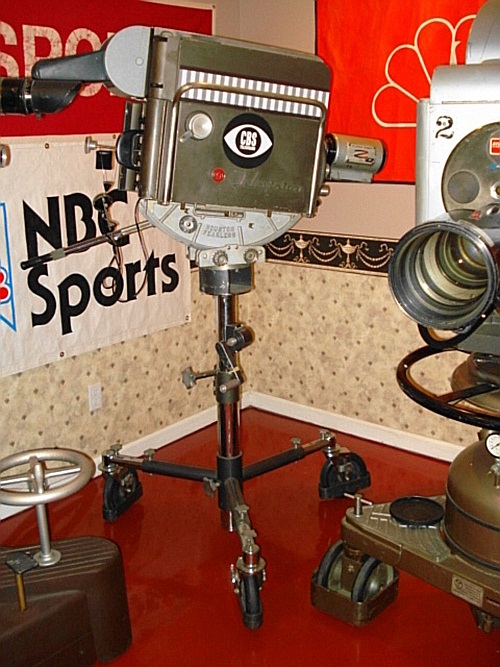
One of my favorite photos was sent to me when I was about 13. It was an 8×10 glossy photo from CBS showing a TK 11/31 on a Baughman mobile ped on the green at Doral in Miami, shooting Arnold Palmer ready to put. As seen above, I have recaptured that moment. The generic name for this was a “Spider Dolly,” and several manufacturers made them. This one was made by E.J. Baughman of Hollywood, and was known simply as a “Baughman Dolly.” There were two versions: one with the geared crank-up feature, and another with a manually pumped hydraulic ram, much like a small car jack. The hydraulic units worked well, but would leak fluid over time. Houston Fearless made a clone of the Baughman hydraulic and released it as the TD-10. Marconi also had one, as did Mole Richardson. The one I have was donated by Tom Sprague and Paul Beck at the Museum of Broadcast Technology, and its original home was Boston University.
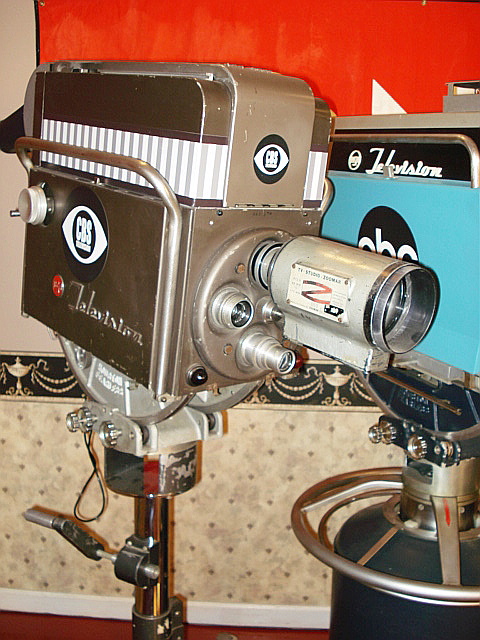
I have dressed this camera in the fashion of CBS New York cameras of the early 1950s, but have taken artistic license to not be 100% correct in applying that look. Here’s why.
CBS and RCA were fierce corporate competitors in a young broadcast industry filled with great promise. They competed for big stars, program rights, station affiliations, and even technology standards. CBS hated RCA and its network, NBC, because of the FCC fight CBS lost to RCA over the color television system. (For excellent in-depth understanding of the history and battles of color television development, the work done by the late Ed Reitan is a must-read. You can access it here.)
Since RCA was the only real US camera maker, CBS had to use them early on, BUT…they would take ALL the RCA logos and even the chrome ‘Television’ markings off their RCA cameras and apply large CBS logos on the sides and front. I did not want to deface my camera by removing these.
I have also added the ‘stripe band’ to the TK11’s viewfinder. This banding was usually found only on the New York-area CBS TK10/30s. However, it was applied to several of the early CBS TK11/31s, as can be seen in the 1953 photo below of some very happy CBS crew members with one of the biggest stars ever.
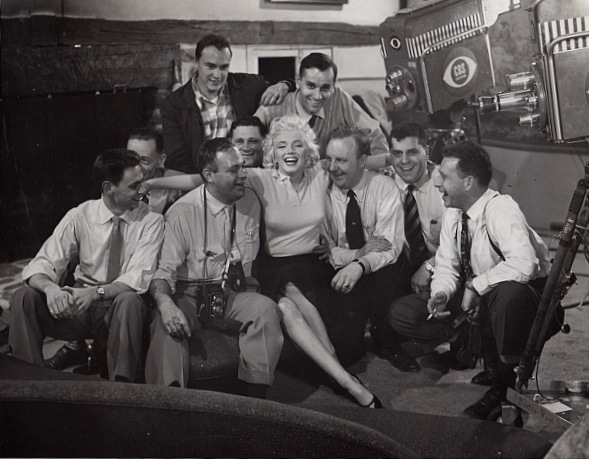
Above is Marilyn Monroe with two CBS-banded TK11s; below, my CBS-banded TK11.
Photo courtesy CBS Photo Archives. All rights reserved. This image cannot be archived, copied, sold, leased or shared.
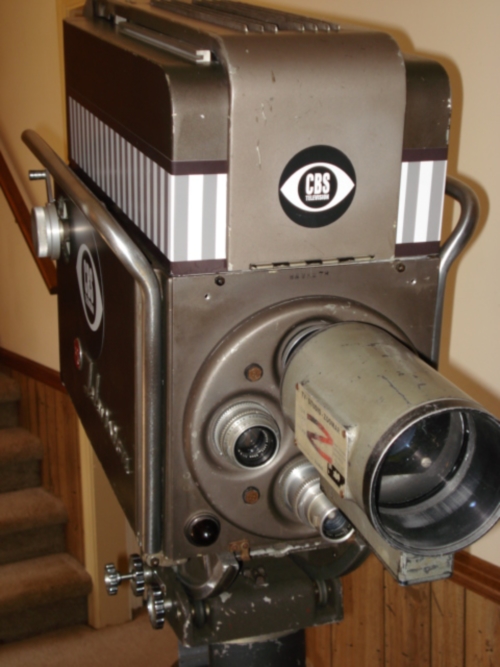

If you are wondering what this band thing is all about…well, I once did, too. The friend who created the artwork (eye logo and banding) for the camera is Pete Fasciano, creator of the Avid Editing System and a TV technology historian. Pete is responsible for restoring the historic original RCA Indian Head Test Pattern found by Chuck Pharis.
Pete noticed the black horizontal lines and the alternating grey/white vertical lines were the basis of a grey scale camera setup test pattern.
According to Pete, the preamplifier settings on these cameras often drifted off as they got hotter and had to be adjusted by the camera operator. What if there was a convenient simple greyscale pattern around to quickly swing to – say, for instance, on another camera – that would allow the operator to focus and adjust within a few seconds, and then swing back to the scene they were shooting? Eureka! CBS New York veteran Jurgan Kirleis helped verify Pete’s suspicion that the banding was actually a brilliant ‘quick trick’ the CBS engineers had come up with. The reason the banding was not used much on the TK11/31s probably has to do with the handles on each side; with them in place over the banding, sharp focus on the lines was more difficult.

The TK11/31 in my collection is pictured here in use at WAVE-TV in Louisville, Kentucky. This photo is from a 1962 RCA Broadcast News magazine. Notice both have an external lens orbiter box; as seen in some of the images below, there are holes in the left door of my TK11 where it used to fit. The camera on the pedestal has my Zoomar lens, but when my camera arrived, it was on the homemade angle iron tripod and wheels.
This may be a dumb question, but i notice that the Zoomar lens is on a turret along with other lenses and I know that it connects with a rod that goes through the camera body to the back (we had one on a camera at WMET in Baltimore). How did that work with the turret? Did it disengage or move with the turret? We had one of our Sarkes Tarzians with the zoom and one with a turret.
Thanks,
mmoser
p.s. Tell Pete and Tom I said hi!